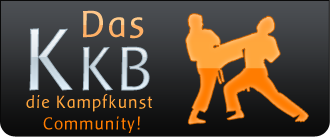In einem WT/WC-Thread wurde behauptet, dass WT mit so wenig Kraft auskomme, wie "bisher noch nie erlebt".
Die Rückfragen zu meiner Antwort führen möglicherweise zu einer neuen Aikido-Diskussion. Deshalb eröffne ich mal einen neuen Thread, da das Thema ja nichts mehr mit einer bestimmten WT/WC-Schule zu tun hat.
Der Name war mir bis dahin nicht bekannt oder bewusst. Das Interview fand ich aber ziemlich interessant; daher danke für den Hinweis darauf: https://www.aikidosangenkai.org/blog...kumura-part-2/
Mit Systema habe ich keinerlei praktische Erfahrung. Ich kann nur sagen, dass in den 4 Videos mit Shirakawa Ryuji und Takahide Kitagawa die Systema-Demos für mich einen entspannteren Eindruck machen als die Aikido-Demos. Klar sind es Übungen, aber das gilt ja auch für Aikido. Ich habe ja schon oft geschrieben, dass ich aufgrund des kooperativen Charakters des Ki-No-Nagare-Trainings kein Gefühl entwickle, ob das für SV oder Kampf anwendbar ist (was für mich auch kein Ziel ist), zumindest so lange ich keine Erfahrungen in anderen KKe sammle.
Daher ist es für mich auch keine Frage, dass man im Aikido weitgehend "kraftlos" üben kann, wohl aber, ob das im Kampf oder SV auch so anwendbar ist. Von der Statur her wäre dann (jedenfalls für mich) auch eher Gozo Shioda als Morihei Ueshiba ein Vorbild in dieser Hinsicht. Die "anderen Fähigkeiten, eventuell solche die Körperkraft ersetzen können, oder diese auf eine effizientere Weise einsetzen" - sprich Aiki oder Budo-Body wurden ja in früheren Aikido-Threads schon oft und ausführlich erörtert.
Interessant an dem Interview fand ich, dass Ueshiba zwischen "softness" und "acceptance" unterschied:
Auch der Abschnitt, in dem es um Timing geht fand ich interessant, weil er eine Aussage aus einem bekannten Interview mit O'Sensei und Kisshomaru Ueshiba erläutert:Q: Are you talking about softness?
A: It’s different from softness. O-Sensei would say “It’s no good to be soft! In Aikido “acceptance” (素直さ) is important. Soft and accepting are different.”.
Q: Those are very important words, aren’t they?
A: In the end, if you are not accepting then you and the opponent can never become one. I think that Judo was also this way originally. In Budo you must have the acceptance to be like a “willow in the breeze”, receiving and flowing.
O-Sensei: Absolutely not. It is not a question of either sensen no sen or sen no sen. If I were to try to verbalize it I would say that you control your opponent without trying to control him. That is, the state of continuous victory. There isn’t any question of winning over or losing to an opponent. In this sense, there is no opponent in aikido. Even if you have an opponent, he becomes a part of you, a partner you control only.
Quelle: https://aikidojournal.com/2016/09/24...omaru-ueshiba/Folgender Abschnitt, der unmittelbar dem "chopstick"-Zitat folgt, fand ich auch bemerkenswert:Q: Is this the same as “Go-no-sen” (後の先)?
A: No, it’s different. At first glance it appears to be “Go-no-sen”, but O-Sensei said “You cannot divide timing into three (“Sen-sen-no-sen” / 先先の先, “Tai-no-sen” / 対の先, “Go-no-sen” / 後の先). That’s no good for Aikido. There is only one kind of timing in Aikido, that is to always take the initiative.”. This is an area that is difficult to explain. It’s just that your psychological state is different. I was told “For that reason, Aikido does not have attacking techniques, they are unnecessary”. So, in my thinking it is that form appears to be “Go-no-sen”, but in your feeling it is “Sen-sen-no-sen”.
Das erinnert mich daran: Wenn der Angreifer das Gefühl hat, in die Bewegung von Nage hineingezogen zu werden, wird das nicht mit dem Begriff "attractive power/force" bezeichnet?A: Well, what I can’t understand even now was the feeling of his wrists. When you grabbed his wrist it felt as if you were somehow floating. When we were doing breath power training, even if I gripped him with all of my strength, it was just completely different. That feeling is still a mystery to me today.
Q: Was it softness?
A: It was different than softness. There was an elastic force, and even though I was grabbing it felt as if I was being grabbed…
Q: “Even though you were grabbing it felt as if you were being grabbed”?
A: O-Sensei told me “In Aikido, even if there is an opening (in the opponent), don’t leap into it”. It is said that the Samurai of old didn’t say “I was cut”, rather they said “I made them cut”. Aikido is the same – my hand is not grabbed, I make them grab my hand. Technique is the same, you make the opponent leap in and then take them.







 Mit Zitat antworten
Mit Zitat antworten